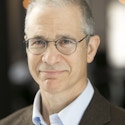Simons Investigators
- Email:
[email protected]
Simons Investigators are outstanding theoretical scientists who receive a stable base of research support from the foundation, enabling them to undertake the long-term study of fundamental questions.
The Investigator program has been discontinued.
Simons Investigators in Mathematics, Physics, Astrophysics and Computer Science
The intent of the Simons Investigators in Mathematics, Physics, Astrophysics and Computer Science programs is to support outstanding theoretical scientists in their most productive years, when they are establishing creative new research directions, providing leadership to the field and effectively mentoring junior scientists. A Simons Investigator is appointed for an initial period of five years. Renewal for an additional five years is contingent upon the evaluation of scientific impact of the Investigator.
Simons Investigators in Mathematical Modeling of Living Systems (MMLS)
This program aims to help the research careers of outstanding scientists working on mathematical and theoretical approaches to topics in the life sciences. A Simons Investigator in MMLS is appointed for five years.
Math+X Investigators
This program encourages novel collaborations between mathematics and other fields in science or engineering by providing funds to professors to establish programs at the interface between mathematics and other fields of science or engineering. A Math+X Investigator is appointed for an initial period of five years. Renewal for an additional five years is contingent upon the evaluation of scientific impact of the Investigator.
- Email:
[email protected]
- Email:
[email protected]
2015
Ian Agol, Ph.D.
University of California, Berkeley
Ian Agol has made major contributions to three-dimensional topology and hyperbolic geometry, completing some of Thurston’s problems elucidating the structure of 3-manifolds. He proved several deep and long-standing conjectures, including the Virtual Haken conjecture, the Marden Tameness conjecture and the Simon conjecture.
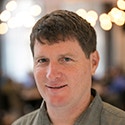
Ben Green, Ph.D.
University of Oxford
Ben Green is an expert in analytic number theory. Among his achievements is the Green–Tao theorem, establishing that primes contain arbitrarily long arithmetic progressions.
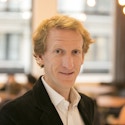
Raphaël Rouquier, Ph.D.
University of California, Los Angeles
Raphaël Rouquier has initiated a new field in mathematics, ‘higher representation theory.’ He constructed novel categories of geometric and representation-theoretic interest and applied these to problems in the theory of finite groups, Lie theory, algebraic geometry and mathematical physics.
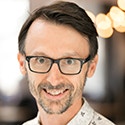
Christopher Skinner, Ph.D.
Princeton University
Christopher Skinner works in number theory and arithmetic geometry. One of his striking recent results is a proof, in joint work with collaborators, that a positive proportion of elliptic curves defined over the rational numbers satisfy the Birch–Swinnerton-Dyer conjecture.
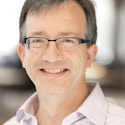
Dan Boneh, Ph.D.
Stanford University
Dan Boneh is an expert in cryptography and computer security. One of his main achievements is the development of pairing-based cryptography, giving short digital signatures, identity-based encryption and novel encryption systems.
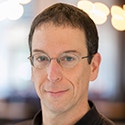
Subhash Khot, Ph.D.
New York University
Subhash Khot initiated a new direction in computational complexity theory and approximation algorithms, based on his Unique Games conjecture, which is currently one of the most important conjectures in theoretical computer science.
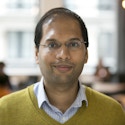
Christopher Umans, Ph.D.
California Institute of Technology
Christopher Umans works on complexity theory, in particular, algorithms and randomness in computations. He has established new upper bounds for the complexity of matrix multiplication and developed a novel algorithm for polynomial factorization.
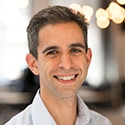
Jonathan Feng, Ph.D.
University of California, Irvine
Jonathan Feng is recognized as one of the leaders in the theoretical study of dark matter, known for his work in constructing theoretical models, deducing observational consequences, and motivating and interpreting experimental searches for dark matter.
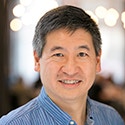
Alexei Kitaev, Ph.D.
California Institute of Technology
Alexei Kitaev’s work on topologically protected states of matter helped found the field of topological quantum computing; his prediction that topological superconductors may sustain Majorana fermions has initiated a major experimental activity. His most recent work concerns a simple quantum model that exhibits emergent gravity. Another topic of Alexei’s research is the mathematical description of quantum phases of matter.
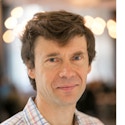
Andrea Liu, Ph.D.
University of Pennsylvania
Andrea Liu is making foundational contributions to the field of mechanics, in particular to the behavior of disordered packings of particles ranging in size from atoms or molecules (glass) to sand grains. With Nagel, she introduced the concept of jamming, explaining how random assemblies of closely packed objects become rigid. Building on this work and her subsequent analysis of the jamming transition, Liu has provided new insights into the elastic and flow properties of highly defected solids, identifying the topological defects whose motion allows flow and the soft modes associated with them.
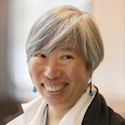
Mark Van Raamsdonk, Ph.D.
University of British Columbia
Mark Van Raamsdonk uses the holographic insights from the gauge-gravity duality to obtain new results in the theory of quantum gravity. He is particularly known for his recent results relating the geometrical structure of spacetime to entanglement structure of the holographically dual boundary quantum field theory.
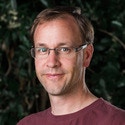
Ashvin Vishwanath, Ph.D.
Harvard University
Ashvin Viswanath is a leading quantum condensed matter physicist, known for his work on quantum phase transitions beyond the Landau–Wilson–Fisher paradigm, his recent theoretical prediction of Weyl semimetals and his generalizations of the topological insulator concept beyond the single-particle approximation.
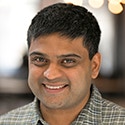
Anastasia Volovich, Ph.D.
Brown University
Anastasia Volovich’s work on gauge and gravity theories has introduced a new perspective on Feynman diagram calculations along with powerful and extremely efficient methods for their evaluation. Her ongoing work is uncovering deep mathematical structures within the gauge theories of particle physics.
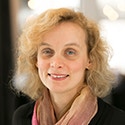
Matthieu Wyart, Ph.D.
New York University
Matthieu Wyart’s work has created a new scientific understanding of the physics of disordered and glassy systems. His study of soft modes controlled by random geometry in systems of closely-packed particles is recognized as a major advance, and his introduction of the idea of marginal stability unifies a wide range of phenomena, providing new insights into the statics and dynamics of glassy systems. Wyart resigned his Investigatorship in 2015 to move to a position at EPFL, Lausanne.
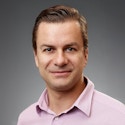
Michael Desai, Ph.D.
Harvard University
Michael Desai combines theoretical and experimental work to bring quantitative methodology to the field of evolutionary dynamics; he and his group are particularly known for their contributions in the area of statistical genetics.
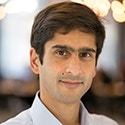
Andrew Mugler, Ph.D.
Purdue University
Andrew Mugler works on sensing and information processing in cells. He is particularly known for work demonstrating that spatial effects at the molecular level, such as protein clustering, can alter sensing and computation at the cellular level. His future research will involve combining the analysis of single-cell sensing with cell-cell communication to develop a theory of collective sensing, applicable to multicellular processes such as cancer metastasis.
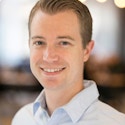
James O’Dwyer
University of Illinois at Urbana-Champaign
James O’Dwyer is known for his innovative work bringing new ideas from statistical physics to bear on the analysis of ecological problems. His very recent work on coevolution in microbial communities is recognized as opening a new direction for research.
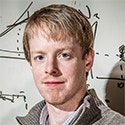
Michael Weinstein, Ph.D.
Columbia University
Michael Weinstein’s work bridges the areas of fundamental and applied mathematics, physics and engineering. He is known for his elegant and influential mathematical analysis of wave phenomena in diverse and important physical problems. His and his colleagues’ work on singularity formation, stability and nonlinear scattering has been central to the understanding of the dynamics of coherent structures of nonlinear dispersive wave equations arising in nonlinear optics, macroscopic quantum systems and fluid dynamics. This led to work on resonances and radiation in Hamiltonian partial differential equations, with applications to energy flow in photonic and quantum systems. Recently, he has explored wave phenomena in novel structures such as topological insulators and metamaterials.
